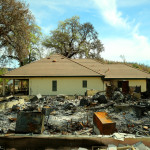AUSTIN, Texas – Eligible individuals and business owners in Erath, Gregg, Harrison, Hood, Jasper, Marion, Newton, Orange and Parker counties who register for disaster assistance from the Federal Emergency Management Agency (FEMA) may receive an automated phone call from the U.S. Small Business Administration (SBA). SBA’s recorded message gives instructions on how to request an application for a low-interest disaster loan.
Because FEMA grants may not cover all damage or property loss, private insurance and low-interest loans from the SBA are major sources of additional disaster recovery funds for businesses of all sizes (including landlords), private non-profits, homeowners and renters.
The survivor must complete and submit the SBA application because it may open the door to further assistance, including additional FEMA grants. There is no cost to apply and no obligation to accept the loan.
Interest rates can be as low as 4 percent for businesses, 2.625 percent for private nonprofit organizations and 1.813 percent for homeowners and renters with terms up to 30 years.
- Eligible homeowners may borrow up to $200,000 for home repair or replacement of primary residences, and eligible homeowners and renters may borrow up to $40,000 to replace disaster-damaged or destroyed personal property, including a vehicle.
- Businesses of all sizes and nonprofit organizations may borrow up to $2 million to repair or replace damaged or destroyed real estate, machinery, equipment, inventory and other business assets.
- Small businesses and most private nonprofits suffering economic impact from a disaster can apply for up to $2 million for any combination of property damage or economic injury under SBA’s Economic Injury Disaster Loan (EIDL) program.
FEMA and SBA encourage survivors to:
- Register with FEMA at DisasterAssistance.gov or by phone (voice, 711 or video relay service) at 800-621-3362, TTY 800-462-7585. Toll-free lines are open 7 a.m. to 10 p.m., seven days a week and multilingual operators are available.
- Go online at SBA.gov/disaster and download an application. Contact SBA at 800-659-2955, by email at disastercustomerservice@SBA.gov or meet with an SBA Representative at a Disaster Recovery Center to learn more about disaster loans, the application process, or for help completing the SBA application. Deaf and hard-of-hearing individuals may call 800-877-8339.
Credit:



